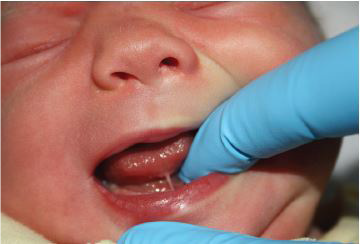Tongue tie treatment is when the short, tight piece of skin connecting the underside of the tongue to the bottom of the mouth is cut. It is done by nurses, midwives or doctors.
It is a quick, simple and almost painless procedure. It usually improves feeding straight away.
As the procedure only takes a few seconds, young babies do not need an anaesthetic and you can start feeding immediately. Older babies will need a general anesthetic which means they will not be awake during the procedure.
During the procedure your baby's head is held still. Sterile, round ended scissors will be used to cut the tongue tie. There should not be much bleeding. Babies are likely to cry immediately after the procedure. The majority of babies cry for less than a minute. Some babies will sleep through the procedure. Your baby will be encouraged to feed straight away. This helps their tongue to move and stops the tongue tie reforming.
If your baby is offered tongue tie treatment the risks and benefits will be discussed with you. It is your decision. If you choose not to have the procedure you will continue to receive feeding support. If at a later date you are concerned about your baby’s feeding please contact your midwife or health visitor.
Your baby may get a white patch (ulcer) under their tongue. This should heal in 1 to 2 days. It will not bother your baby.
Your baby may be unsettled for a few days after the procedure. It may take a few weeks before your baby is fully comfortable when feeding. Sometimes the procedure will not improve feeding.
Very occasionally a tongue tie may reoccur. If this happens the tongue tie treatment may need to be done again.




